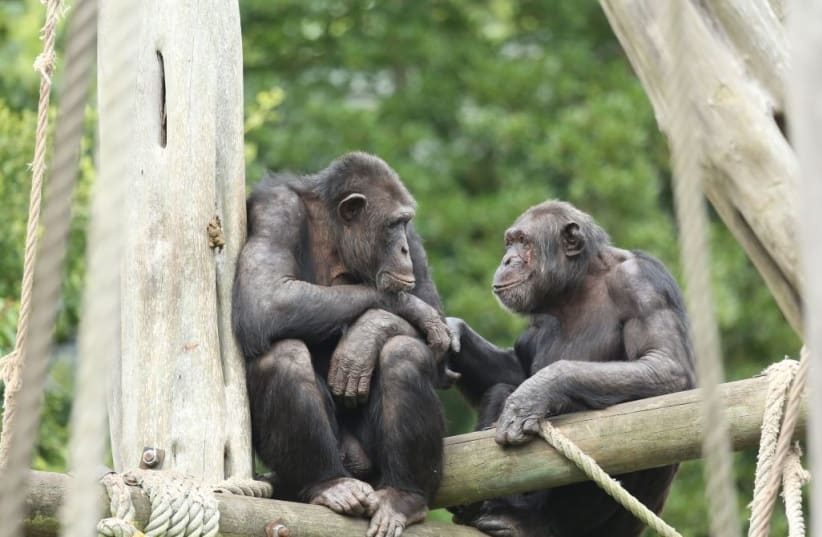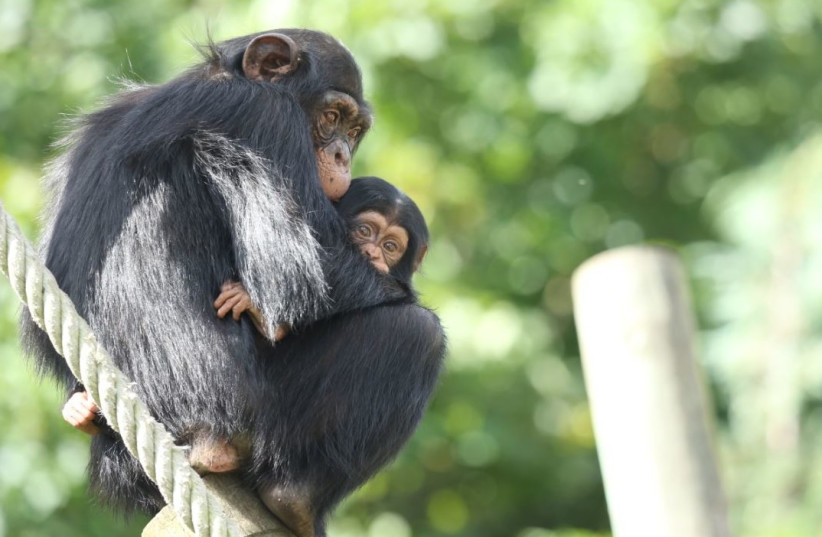It’s said that elephants never forget, that they can find watering holes they visited some years ago and that they “mourn” dead relatives’ bodies for days before continuing their wandering. Dolphins also have been found to have good memories.
But pachyderms and the maritime mammals have been outdone by great apes like bonobos – which entrance visitors at the entrance to the Jerusalem Biblical Zoo and many other places here and around the world – and chimpanzees in recognizing group mates they haven’t seem for over two decades. University of California at Berkeley researchers who have been studying these privates say they have evidence of what’s believed to be the longest-lasting nonhuman memory ever recorded.
The findings also provide backing to the theory that long-term memory in humans, chimpanzees and bonobos probably comes from our shared common ancestor that lived between six million and nine million years ago.
The team used infrared eye-tracking cameras to record where bonobos and chimps looked intently when they were shown side-by-side images of other bonobos or chimps. One picture was of a stranger; the other was of a bonobo or chimp that the participant had lived with for a year or more.
Participants’ eyes lingered significantly longer on images of those with whom they had previously lived, the researchers found, suggesting some degree of recognition. In one case, a bonobo named Louise had not seen her sister, Loretta or nephew Erin, for over 26 years. But when researchers showed Louise their images, her eyes homed in on the photos.
“These animals have a rich recognition of each other,” said Laura Simone Lewis, a postdoctoral fellow in Berkeley's psychology department and lead author of the study, which was published in the journal Proceedings of the National Academies of Sciences under the title “Bonobos and chimpanzees remember familiar conspecifics for decades.”
They also found that the primates looked longer at individuals with whom they had had more positive, as compared with antagonistic, relationships. In other words, they seemed to recognize friends more than foes.
“We don’t know exactly what that representation looks like, but we know that it lasts for years,” she noted, “This study is showing us not how different we are from other apes, but how similar we are to them and how similar they are to us.”
The findings expand what was known about long-term memory in animals and also raise questions central to evolutionary biology and psychology – most importantly was how did humans develop such good long-term memory.
Connecting the dots
Understanding the links between our vivid, episodic memory and the recall of other animals has long been a research puzzle. Previous studies have shown that ravens, for example, can recall social relationships in uncanny ways. Social memory beyond just a few years had previously been documented only in dolphins, which studies have found can recognize vocalizations for up to 20 years.
“That, up until this point, has been the longest long-term social memory ever found in a nonhuman animal,” Lewis said of the dolphin research. “What we're showing here is that chimps and bonobos may be able to remember that long – or longer.”
Lewis’s project was one born from a longtime observation among primate researchers who often go months or years between seeing the animals they study. When they returned, bonobos and chimpanzees acted as if they were picking up right where they left off – so the researchers decided to see if that memory hunch was true.
To get answers, the team began what at times was equal parts genealogy and scrapbooking.
First, they needed to identify bonobos and chimps that had been separated from what we might view as friends or family. Sometimes, members of their group had been relocated to other zoos to prevent in-breeding. Other times, a sibling or elder may have died while they all lived together.
With a list of pairs in hand, sprinkled across zoos in Europe and Japan, researchers needed to track down photos to show the participants. It couldn’t be just any snapshot, however; they needed a quality image taken from around the time that the pair last saw one another. This was somewhat easy for the animals that were separated recently in an era rich with high-quality photos, but it proved much trickier for others like Louise's relatives who were separated almost three decades ago.
The team ended up being able to show images to 26 bonobos and chimpanzees. After setting up a computer system with sensitive cameras and non-invasive eye-tracking tools, participating animals were allowed to enter the room voluntarily. Their compensation was a bottle filled with diluted juice; bonobos and chimps love fruit juice and eat lots of fruit in the wild.
As they sipped, the screens in front of them alternated between pairs of images. The cameras monitored where the animals’ eyes wandered. And the computer logged the time spent on each image down to a fraction of a second – data the team would comb through months later.
“It was a really simple test: Do they look longer at their previous groupmate, or are they looking longer at the stranger?” Lewis said. “And we found that, yes, they are looking significantly longer at the pictures of their previous group mates.”
Lewis said she and others were especially curious about how the participants might react when they were shown an image of a relative they hadn’t seen in years. As the project began, zookeepers monitored the animals for signs of stress – but they didn’t show any markers of agitation. Instead, when images of a once-close relative appeared on the screen, the participants would sometimes stop drinking the juice entirely, seemingly mesmerized by the image.
The study showed that something is happening with the mind in recognizing the images. It was unclear what kind of memories they were. Could they have been rich, episodic narratives like humans have? Might there have been some fleeting curiosity about why they saw this? Can they extrapolate what those relatives might look like today? “This study is reminding us how similar we are to other species walking on the planet,” Lewis concluded, “and how important it is to protect them.”

